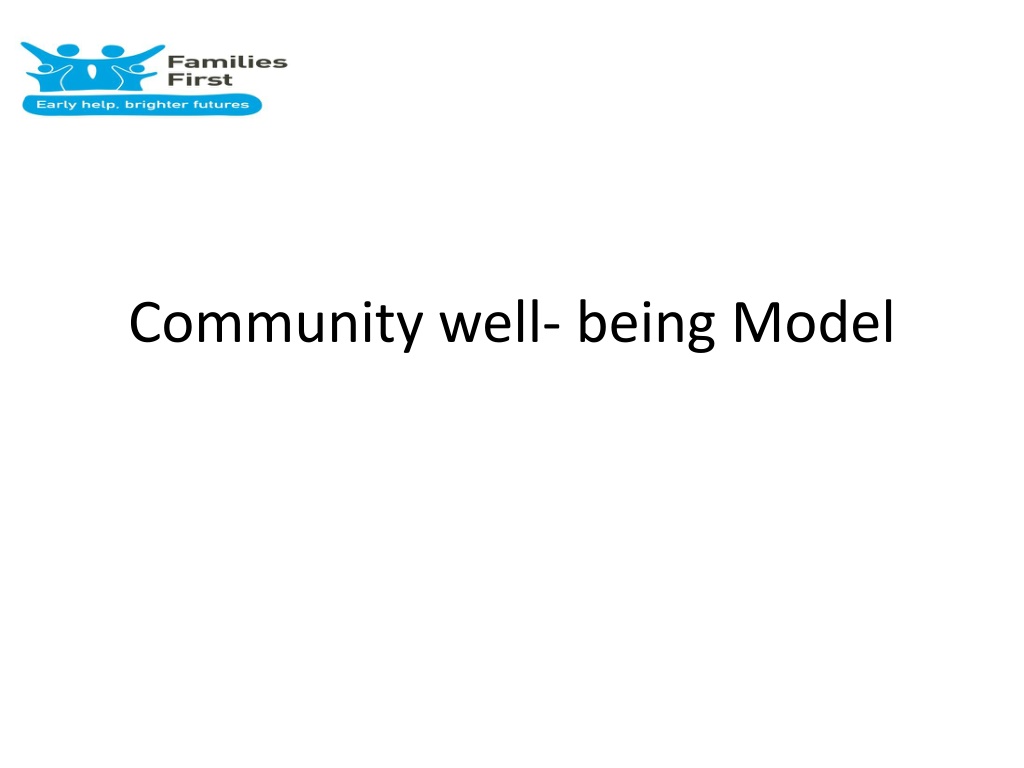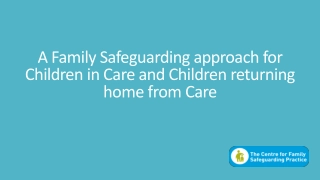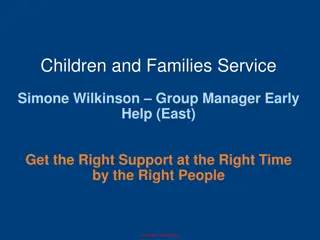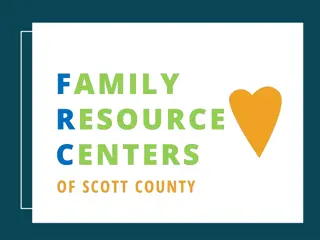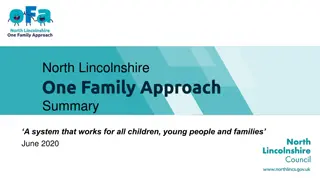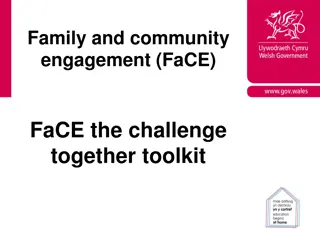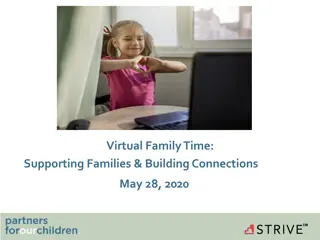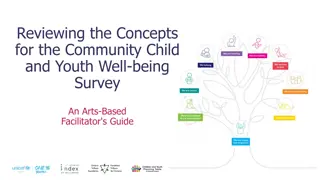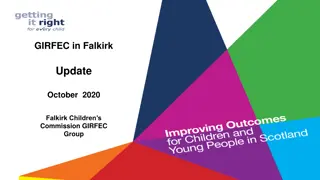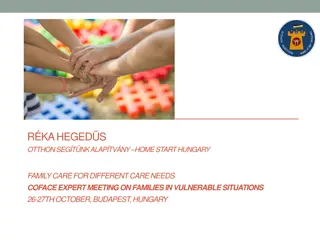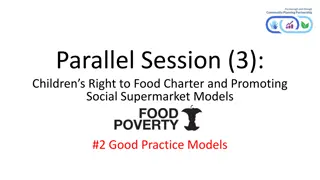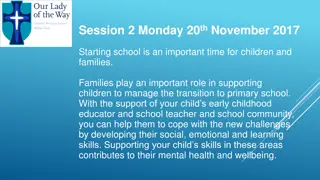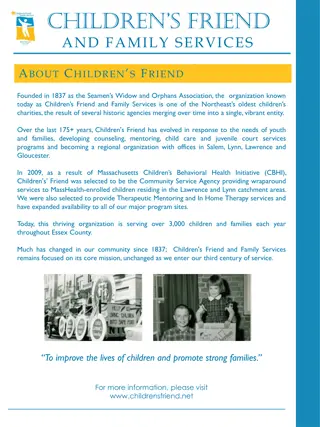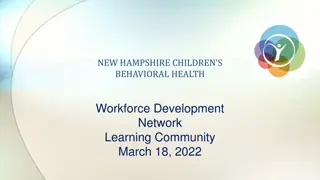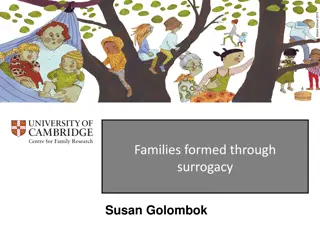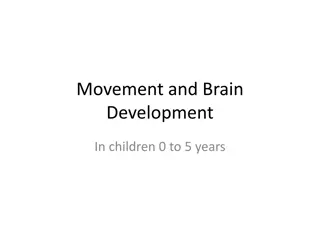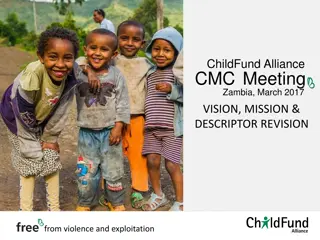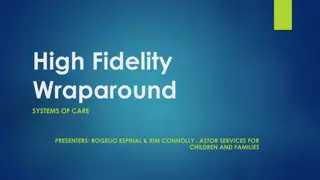Understanding Community Well-Being for Children and Families
Explore the community well-being model to make a positive impact on children and families. Learn how mental health problems affect youth and the importance of early intervention in promoting resilience and well-being. Discover strategies for accessible mental health interventions and empowering families to manage their well-being effectively.
Download Presentation

Please find below an Image/Link to download the presentation.
The content on the website is provided AS IS for your information and personal use only. It may not be sold, licensed, or shared on other websites without obtaining consent from the author. Download presentation by click this link. If you encounter any issues during the download, it is possible that the publisher has removed the file from their server.
E N D
Presentation Transcript
Objectives of the session To leave the session with a better understanding about what the community model is about. How you can use it to make a difference in the lives of the children and families that you know.
Ice- breakers and videos https://youtu.be/otYT0pRJIHU https://youtu.be/KD9-jnLD4lY
Global View Mental health problems account for almost one quarter of the ill health in the UK and their prevalence is rising, with the World Health Organization predicting that depression will be the second most common health condition worldwide by 2020. Poor mental health affects people of all ages, yet, with effective promotion, prevention and early intervention its impact can be reduced dramatically
National Picture 20% of adolescents may experience a mental health problem in any given year.1 50% of mental health problems are established by age 14 and 75% by age 24.2 10% of children and young people (aged 5-16 years) have a clinically diagnosable mental problem3, yet 70% of children and adolescents who experience mental health problems have not had appropriate interventions at a sufficiently early age.4 There has been universal acknowledgment in policy over the past ten years of the challenges faced by children and young people in developing resilience and psychological wellbeing. For those children and young people with diagnosable mental health problems and their parents/carers and the agencies that support them, the challenges are greater. A number of disorders are persistent and will continue into adult life unless properly treated. It is known that 50% of lifetime mental illness (except dementia) begins by the age of 14 and 75% by age 18.
National Picture The emotional wellbeing of children is just as important as their physical health. Good mental health allows children and young people to develop the resilience to cope with whatever life throws at them and grow into well-rounded, healthy adults.
Early help families First objective For mental health interventions to be easily accessible. Knowledge sharing about mental health with children and families No long waits for intervention's Hence community well- being model that will address the needs of children and young people. Empowering families to manage their own well- being
What is CYP IAPT? The Children and Young People s Improving Access to Psychological Therapies programme (CYP IAPT) is a service transformation programme that aims to improve existing Child and Adolescent Mental Health Services (CAMHS). The principles behind CYP-IAPT underpin the development and delivery of the Local Transformation Plans and run throughout Future in Mind .
CYP IAPT? CYP-IAPT seeks to improve services to children, young people and their families through: Better evidence based practice - Increasing the availability and knowledge of best evidence based interventions Better collaborative practice - Goal focused and client centred interventions, using feedback tools to facilitate better working between mental health professionals and families and young people using feedback tools leading to more personalised care Better service user participation - Children young people and their families having a voice and influence at all levels of the organisation
CYP IAPT? Better Cross Agency Working - Encouraging and supporting cross agency collaboration between Health, Social Care and Voluntary and Independent sectors More accountable services through the rigorous monitoring of clinical outcomes to be able to share outcomes with young people and families and demonstrate effectiveness to commissioners Increased awareness working in partnership with organisations delivering mental health services, and those in other sectors working with young people and families to increase understanding of the importance of emotional well-being and decrease stigma.
Treatment Modalities Cognitive Behavioural Therapy (CBT), Parent Training (PT), Systemic Family Practice (SFP), Evidence Based Counselling Practice (EBCP) and Interpersonal Psychotherapy Training for Adolescents (IPTA) evidence based therapies, as well as working with specialist groups: Autism Spectrum Disorder and Learning Disabilities (ASD-LD), and Infant Mental Health.
Current model Band 7 mental Health practitioners. Referrals from CWP. Length of work 6-12 weeks. Various treatment modalities. Consideration of a sessional psychiatrics at this level. Community well-being practitioners providing early intervention work sessions 6-8 week. CBT working with internalised disorders, Parent Training for conduct disorders, Systemic Family Therapy for eating disorders, conduct and depression disorders. Tier 3 Camhs due to risk and escalation of condition. Requiring specialist intervention.
How to Access the service If the case is Acute it does not belong to us then it is NO. If services are already involved it is a NO If some intervention was done in the past and you feel that it could be done again then. YES Triage panel is your entry point for a request of service. With in HCC there is an internal referral tick box system.
Benefits to your services More children and young people will get early mental health help. Organisation's will be able to focus on their specialisms rather than being bogged down with other service concerns. More interventions
CASE STUDY FAMILIES FIRST CAMHS TRANSFORMATION WORKSHOP CASE STUDY 1 J is a girl aged 6 years Background: J is the youngest of four siblings. She lives with her Mum and her new partner. Mum is currently pregnant. Mum is struggling to manage the aggression of the oldest sibling who is hurting J regularly. J is presenting at school as anxious and subdued with violent outbursts towards other children and staff. Mum is willing to work with the school but there are concerns for Mum s well-being and ability to cope. J is unable to sleep at night as sleeps on a sofa bed and finds it uncomfortable. Mum says she is often tearful and has started wetting the bed at night. Mum and School have also observed that some low level repetitive behaviours are developing. What are your initial thoughts about what is happening for J? Which service / s do you think might be helpful in supporting J? What could be done to support Mum?
CASE STUDY FAMILIES FIRST CAMHS TRANSFORMATION WORKSHOP CASE STUDY 2 B is a 14 year old male Background: B is excluded from school following violent behaviour towards a male staff member. There are also allegations that he has hurt his mother following arguments at home. CAMHS referrals have been made on three occasions. Twice it was felt that he didn t meet thresholds and on the most recent referral he walked out half way through the session and refused to return. The case has since been closed. In addition to aggression and anger B is a frequent smoker of cannabis and has been known to self-harm through cutting following his violent outbursts. There was domestic violence in the home which he is believed to have witnessed before he was five and Dad is away for much of the week with work now. Mum has asked you to help him before he spirals out of control and ends up in real trouble. What are your initial thoughts about what is happening for B? Which service / s do you think might be helpful in supporting B? How can we engage a young person who is not keen to attend services?
CASE STUDY FAMILIES FIRST CAMHS TRANSFORMATION WORKSHOP CASE STUDY 2 L is a 12 year old girl Background: L lives with her Mum and Dad and older sister in a very affluent area of Hertfordshire. L is a high achiever, although she does not excel as much as her sister which causes much conflict within the house. Her parents are high earners with senior positions in large organisations and there is much expectation on L. Recently L has begun spending more and more time in her room, she has stopped seeing her friends in evenings and weekends and spends all of her time studying. Her friends are concerned and the school have spoken to her parents about the level of anxiety she seems to be displaying, particularly when she feels she has not done as well as she can. Panic attacks have started within the last few months and L is skipping meals and not looking after herself. L s form tutor is increasingly concerned about the pressure she is under and feels she needs some support to prevent this escalating. Parents are not concerned and feel this is normal and healthy in order for her to achieve. What are your initial thoughts about what is happening for L? Which service / s do you think might be helpful in supporting L? How can we engage a young person whose parents do not identify that there is an issue?
